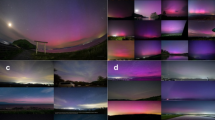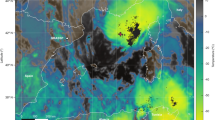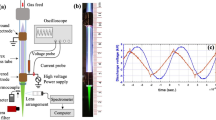Abstract
STUDIES of the day-time aurora have been restricted almost entirely to investigations by radio techniques. So far as we are aware the only published optical work is that by Noxon1 on the red and green lines of atomic oxygen. In this communication we report the preliminary results of an investigation of the spectral region 4000–5900 Å obtained during a day-time aurora by means of a rocket probe launched from Fort Churchill, Manitoba, Canada.
This is a preview of subscription content, access via your institution
Access options
Subscribe to this journal
Receive 51 print issues and online access
$199.00 per year
only $3.90 per issue
Buy this article
- Purchase on SpringerLink
- Instant access to full article PDF
Prices may be subject to local taxes which are calculated during checkout
Similar content being viewed by others
References
Noxon, J. F., J. Atm. Terr. Phys., 25, 637 (1963).
The instrument was a modified form of that described by Fastie, W. G., Crosswhite, H. M., and Markham, T. P., Ann. Geophys., 17, 109 (1961).
Wallace, L., and Nidey, R. A., J. Geophys. Res., 69, 471 (1964).
Author information
Authors and Affiliations
Rights and permissions
About this article
Cite this article
SILVERMAN, S., LLOYD, J., COCHRUN, B. et al. Rocket Optical Observation of a Day-time Aurora. Nature 204, 461–462 (1964). https://doi.org/10.1038/204461b0
Issue date:
DOI: https://doi.org/10.1038/204461b0
This article is cited by
-
Auroral investigations by means of rockets
Space Science Reviews (1967)



